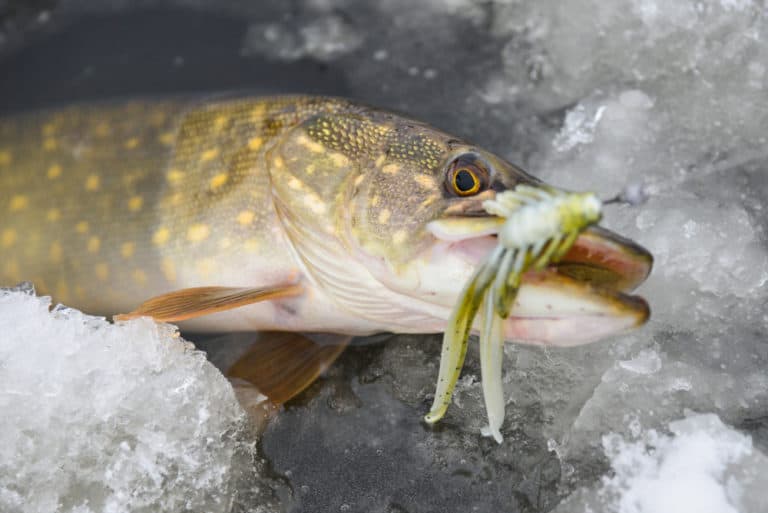How To Rig A Tip Up For Pike
Technological advances have changed how to rig a tip up for
If you’ve never used a tip up before, they’re a pretty simple piece of equipment. They’re placed over a hole in the ice, with a line that can reach a significant depth. When a fish bites, a flag pulls up, indicating that there’s fish around. The rest is up to you.
The very first thing to decide when setting a tip up for a

Having decided on the type of tip up, you need to choose where to place your tip up. Not too long ago, you decided where to put your tip up depending on gut instinct and prior experience.
Nowadays, technology can be used to trace contours in the ice and find the weed lines. This way, you can intercept the
The easy way to do it is to look for heavy weeds beneath the ice, which indicate where the
The heavy and thick Dacron line was the traditional choice for rigging a tip up, and it might be the best choice still. Because of its heft, it’s easier to handle during the freezing cold weather.
If you find yourself wrestling with a particularly big
There are also lines designed specially for use on tip ups, which reduce the chance of cuts or damages. When your lines aren’t being used, make sure to dry them out to prevent mildew from growing.
Rig using a single treble or a two-treble system, depending on the size of the bait you’re using. Tandem trebles tend to be best, as you want to be using some sizable bait. Use a fluorocarbon leader, which is cheap, heavy, and easier to tie.
With it all set up, sink your line, and wait for the
How deep do you set tip ups for pike ?
When rigging a tip up for
The more tip ups you use, the more variety of depths you can reach. Often, you’ll find the
When deciding on how deep to set your tip up, the first thing to consider is the depth of the weeds. You don’t want your bait to get caught in the weeds, or it can get lost, and the
Arrange your tip up roughly a foot above the weeds as the greatest depth. If the weeds are too high, look for a gap, even a small one, before making your hole.
Once you know the depth of the weeds, you can set your tip ups anywhere from 3 feet below the ice, to 15 feet down.
If you’re out on the ice for a long time with a lot of tip ups, you can generally monitor the patterns that the
If only the deeper tip ups are getting action, then change the depth of the shorter ones. Use a marker near the spool when setting your tip up, so you can find the same depth once you’ve reeled something in.
What size treble hook for pike tip up?
The size treble hook you use will partially depend on the size of bait, and partially on the size of the
You can use a single treble hook, but in many cases a tandem set up is the best option. If you’re using two trebles because it’s a particularly large piece of bait, then a #2 might be needed.
Pike are opportunistic feeders, and will scavenge for any food that looks appealing – and easy. That means both live and dead bait can work.
If you have access to live minnows, these are a great choice, as are live suckers. For dead bait, smelt and herring are popular, and likely to attract some
With the larger bait, two trebles are the better choice. A set-up with two #2 trebles might be needed. It’s best to decide by considering the size of your bait. Remember, the bigger the bait, the bigger the
As with the depth, use a mixture of food and hooks on a tip up for
Two essential pieces of equipment to bring with you are pliers and a mouth spreader – these are for once you’ve hooked your






